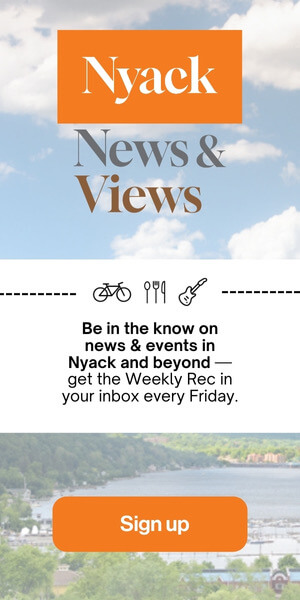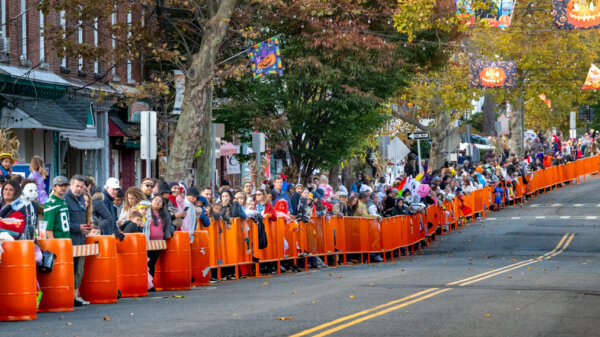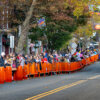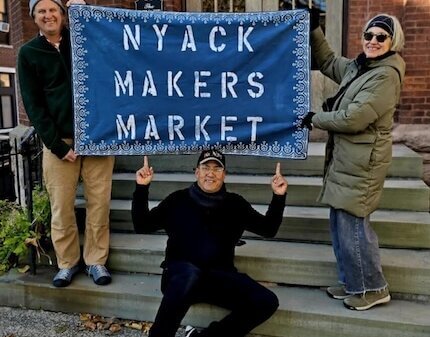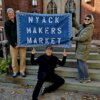There was a time when the Hudson River shimmered with summer promise. In the early 20th century, riverside parks like Nyack Beach, Hook Mountain Beach, Haverstraw Beach, and Bear Mountain State Park drew thousands of New York City day-trippers who arrived by steamer, ferry, and automobile. They came to swim, picnic, and escape the sweltering city. Today, Nyack Beach remains a scenic park—but swimming is just a memory.
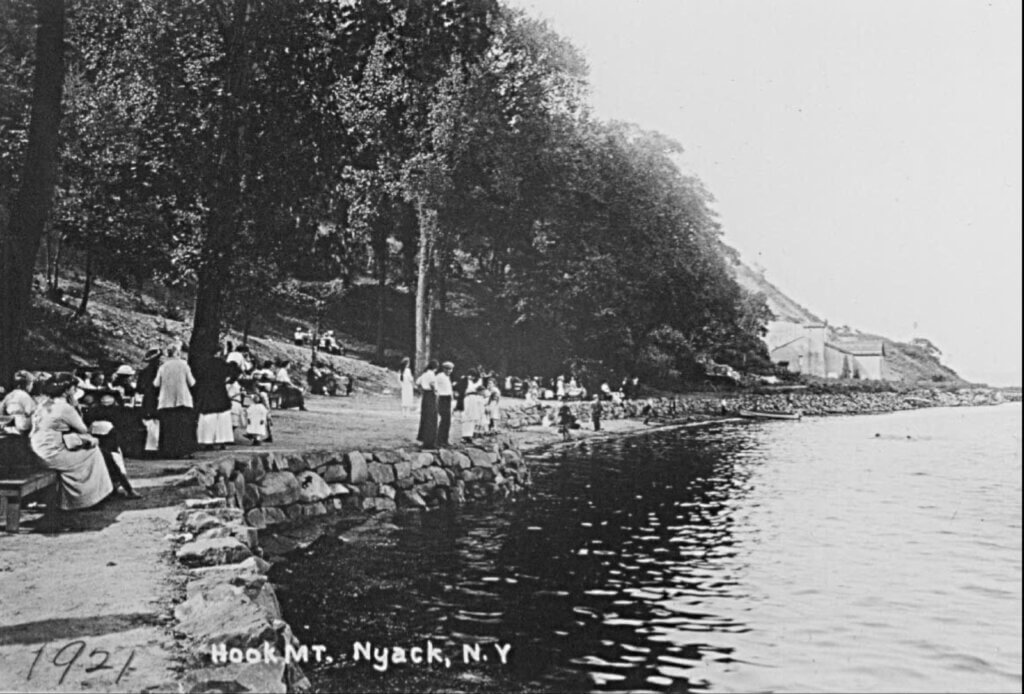
From Quarry to Park
The Palisades Interstate Park Commission (PIPC), formed to stop unchecked industrial and mining expansion, acquired the former trap rock quarry at the foot of the Palisades near Upper Nyack in 1911 and opened it as Nyack Beach State Park. Located at the end of North Broadway, the site had served as the base for the Manhattan Trap Rock Company until it ceased operations in 1911. The company left behind remnants of its work—rail tunnels, a towering concrete powerhouse, and the stone crusher pad on the plateau that once fed rock to waiting barges on the Hudson.

In the 1920s, access to the beach improved when the Sisters of Marydell donated land to create a turnaround and ticket booth at the end of North Broadway. Still, the road to the river remained narrow and rugged. At one time a jitney bus made daily trips from downtown Nyack, and on summer weekends, the gravel lot filled with automobiles. Many villagers simply walked.

A Modest but Beloved Beach

Compared to the larger, amusement-filled parks at Bear Mountain or Hook Mountain, Nyack Beach was quieter and more secluded. A narrow ribbon of sand lined the riverbank, gently sloping into the Hudson—ideal for family wading and swimming. In its heyday, as many as 3,000 visitors a day arrived to swim and picnic. Bathing suits and attitudes evolved with the decades, but the beach remained a favorite with locals.
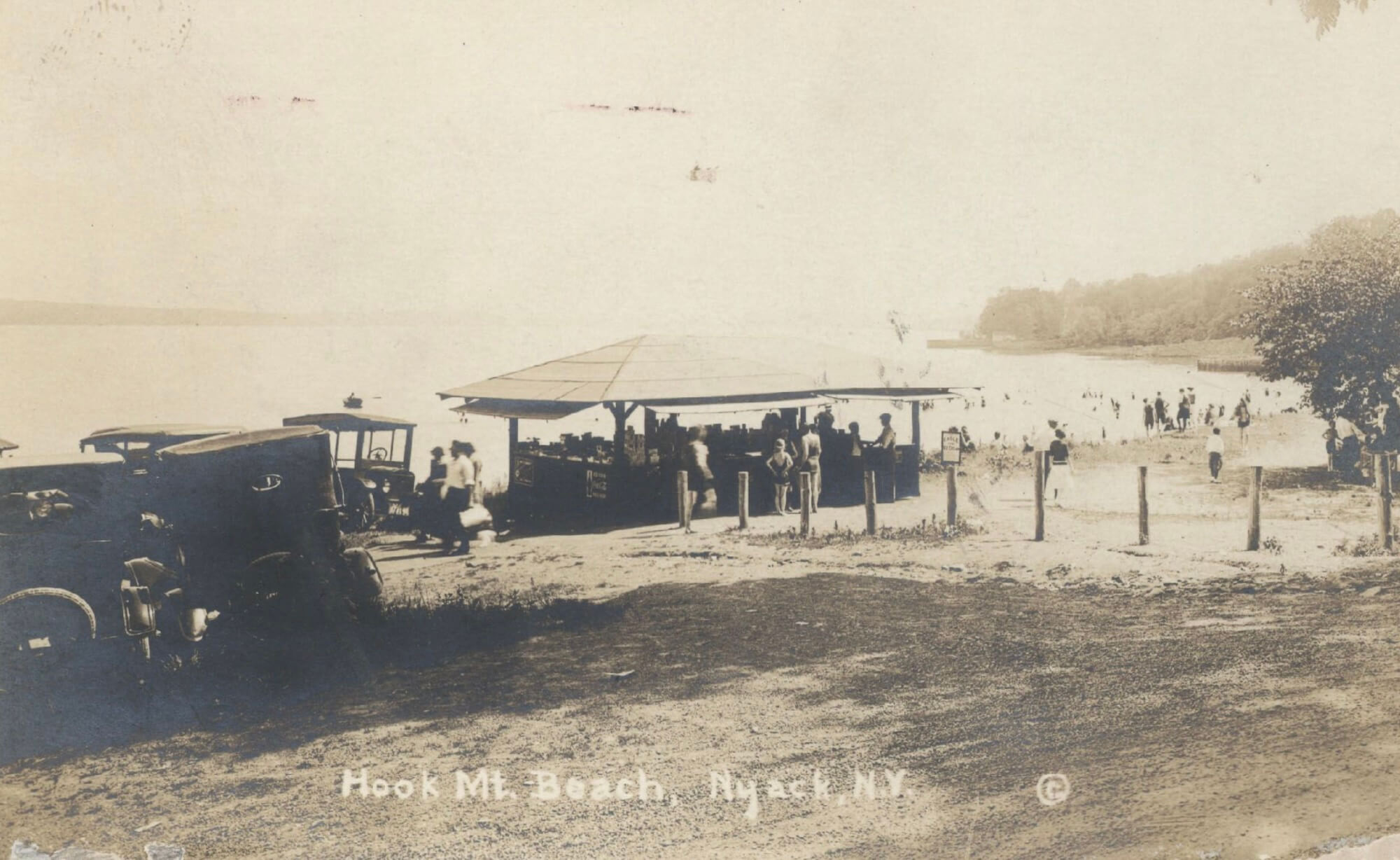
A simple snack stand served refreshments, and a small veranda provided shade. The beach’s centerpiece was the former powerhouse, repurposed by Works Progress Administration (WPA) workers in the 1930s. They renovated the powerhouse by adding a sandstone façade, a large fireplace, bathhouse facilities, and a refreshment counter, transforming the concrete relic into a rustic lodge. Nearby, WPA crews built picnic areas, retaining walls, and a road and hiking trail up to the plateau, where ballfields, restrooms, and overflow parking were added.

The Beginning of the End
Nyack Beach’s decline in swimming started after World War II. For three consecutive summers in the late 1940s, health officials closed the beach due to pollution. Sewage from Nyack, South Nyack, and Upper Nyack—only lightly treated—flowed into the river and contaminated the water. Industrial waste from upriver added to the problem. Although visitors continued to walk and picnic in the park, officials never reopened the beach for swimming.
A 1950 windstorm destroyed the long pier that had once welcomed passenger boats. The wooden structure, originally used by the quarry and later adapted for bathers, was never rebuilt. The collapse of the pier marked a symbolic end to the swimming era.

A Ghost of Summers Past
Today, Nyack Beach still welcomes visitors for walking, biking, birdwatching, and quiet contemplation. On a hot afternoon, it’s easy to imagine the past: children splashing in the shallows, couples lounging on blankets, the hum of summer energy echoing off the cliffs.

Much remains: the sandstone bathhouse, WPA-era sandstone walls, and the sweeping views of the Tappan Zee. But the beach itself—once swimmable and beloved—is now part of the Hudson River’s lost summers.
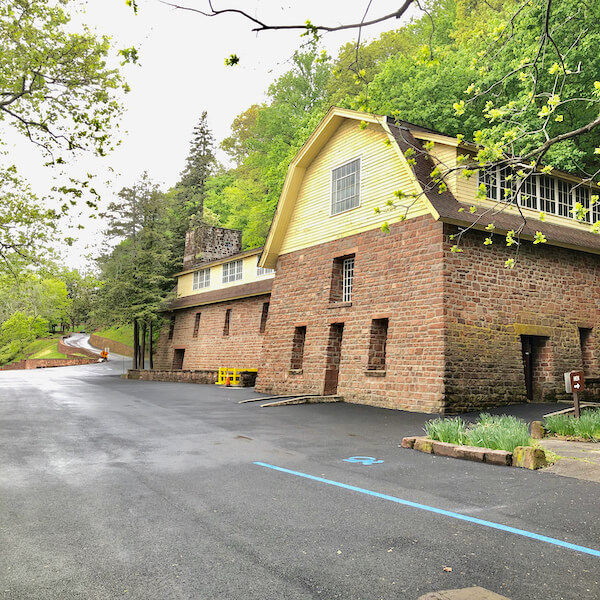
Mike Hays lived in the Nyacks for 38-years. He worked for McGraw-Hill Education in New York City for many years. Hays serves as President of the Historical Society of the Nyacks, Vice-President of the Edward Hopper House Museum & Study Center, and Upper Nyack Historian. Married to Bernie Richey, he enjoys cycling and winters in Florida. You can follow him on Instagram as UpperNyackMike.
Editor’s note: This article is sponsored by Sun River Health and Ellis Sotheby’s International Realty. Sun River Health is a network of 43 Federally Qualified Health Centers (FQHCs) providing primary, dental, pediatric, OB-GYN, and behavioral health care to over 245,000 patients annually. Ellis Sotheby’s International Realty is the lower Hudson Valley’s Leader in Luxury. Located in the charming Hudson River village of Nyack, approximately 22 miles from New York City. Our agents are passionate about listing and selling extraordinary properties in the Lower Hudson Valley, including Rockland and Orange Counties, New York.



